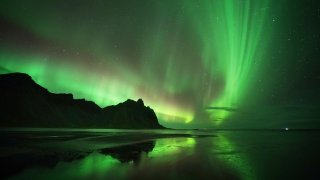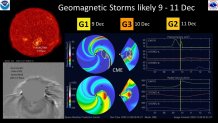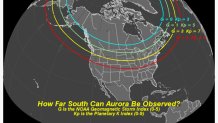
No, unfortunately the Northern Lights will not be visible in North Texas (I wish!) but its possible people in the northern tier of the U.S.
The Space Weather Prediction Center (SWPC), a division of NOAA, has forecast a solar storm heading our way. The SWPC has issued a G3 Geomagnetic Storm Watch for Thursday, Dec 10.

The yellow line on the map shows the furthest southward potential the Northern Lights could be observed. Communication disruptions will be possible as well.

How is this possible?
On Dec. 7, a coronal mass ejection occurred. This is an eruption of material from near the surface of the sun that sends a mass of protons and electrons into space at about a million miles per hour. This energy from the sun will reach our atmosphere.
Local
The latest news from around North Texas.
When these particles from the sun collide with the Earth’s magnetosphere, they will cause a geomagnetic storm. This will cause the aurora borealis, also known as the “northern lights” to possibly be seen lighting up skies as far south as Iowa, Pennsylvania and Oregon.
Close, yet so far away. While we miss out on this in North Texas, the Geminid Meteor shower will be visible in Texas this weekend. The peak is 2 a.m. Sunday night into Monday morning. You might be able to see anywhere between 50-150 meteors per hour.



